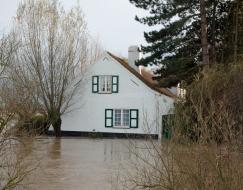Wet winter weather is coming and many people are unaware that most standard homeowner and commercial property policies do not cover flood or mudslide damage.
Insurance Commissioner Dave Jones encourages residents to review their insurance policies and assess their individual needs. Residents need to determine exactly what their policies cover and determine if flood insurance is a suitable option for them according to a recent press release.
“In California, any area can be affected by a flood or mudslide,” said Commissioner Jones. “As we move into the rainy season, I urge homeowners to review their policies to see what is covered, assess their insurance needs and determine if flood insurance is aright for them. Consumers need to be prepared before disaster strikes and reduce the stress that severe weather may bring.”
This week is California’s Flood Preparedness Week. Depending on the location and the structure, floods have the ability to commit catastrophic damage to homes and businesses. Less than 2.5 percent of California residents and business owners have flood insurance. While not all Californians need flood insurance, all homeowners need to assess whether they are at risk for flooding, and what type of coverage is right for them. Home and business owners should also be advised that it generally takes 30 days for flood insurance to kick in, once a policy has been issued.
One exception to this rule occurs when flood insurance is required for a mortgage loan. The closing date of the loan is when the flood insurance becomes effective.
How do you define that your property is a flood risk? Flooding can happen anywhere but certain areas may be more susceptible to serious flooding. FloodSmart.gov offers flood insurance rate maps to indicate areas that are high, moderate and low risk. High risk areas claim that there is at least a 1-in-4 chance of flooding during a 30-year mortgage period. All home and business owners are required to buy flood insurance.
Moderate-to-low risk areas are not required to own flood insurance but is recommended for all property owners and renters. These areas are also shown on flood maps. Undetermined risk essentially means that the areas have potential for a flood but not on a consistent basis.
FEMA has published almost 100,000 individual flood insurance rate maps and you can put in your specific address to see how your property is evaluated and help you decide on flood insurance. Features such as highways, secondary roads, lakes and SFHA’s which are special flood hazard areas as well as flood insurance risk zones are indicated on the maps.
Flood insurances covers your personal property and the structure of your home but ask a qualified agent exactly what is and is not covered when you research for the best policy for your personal location and type of residence.












